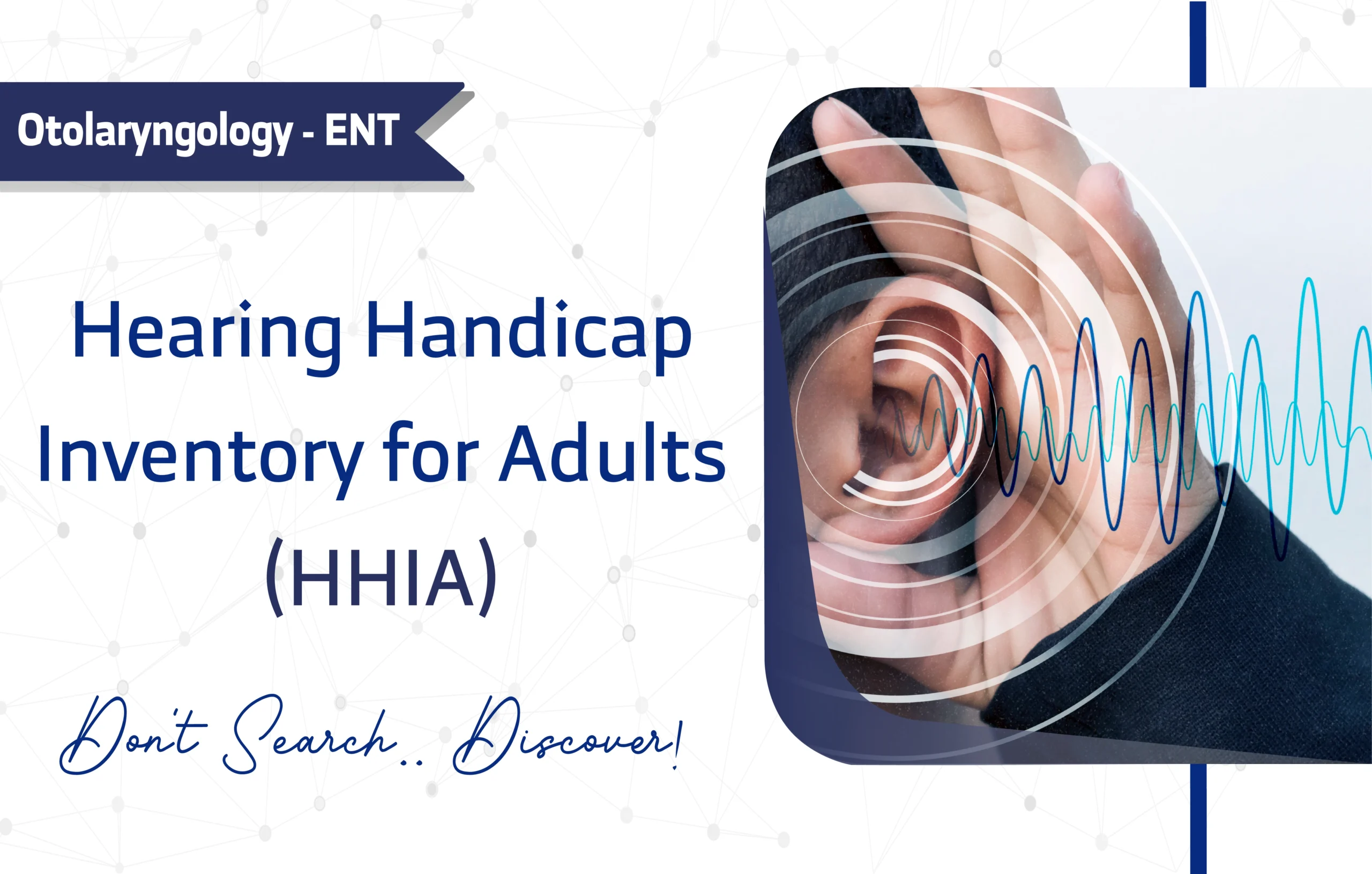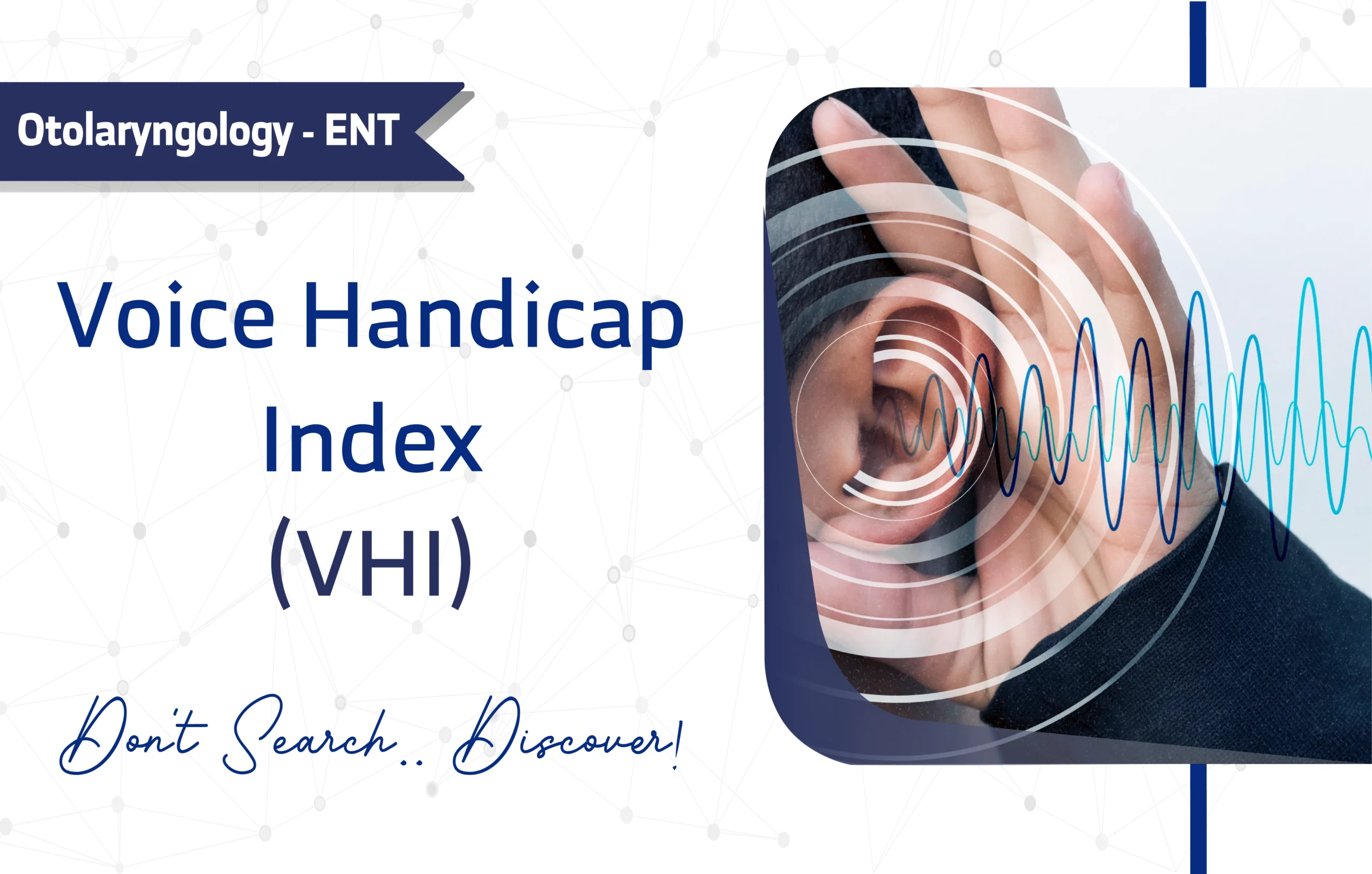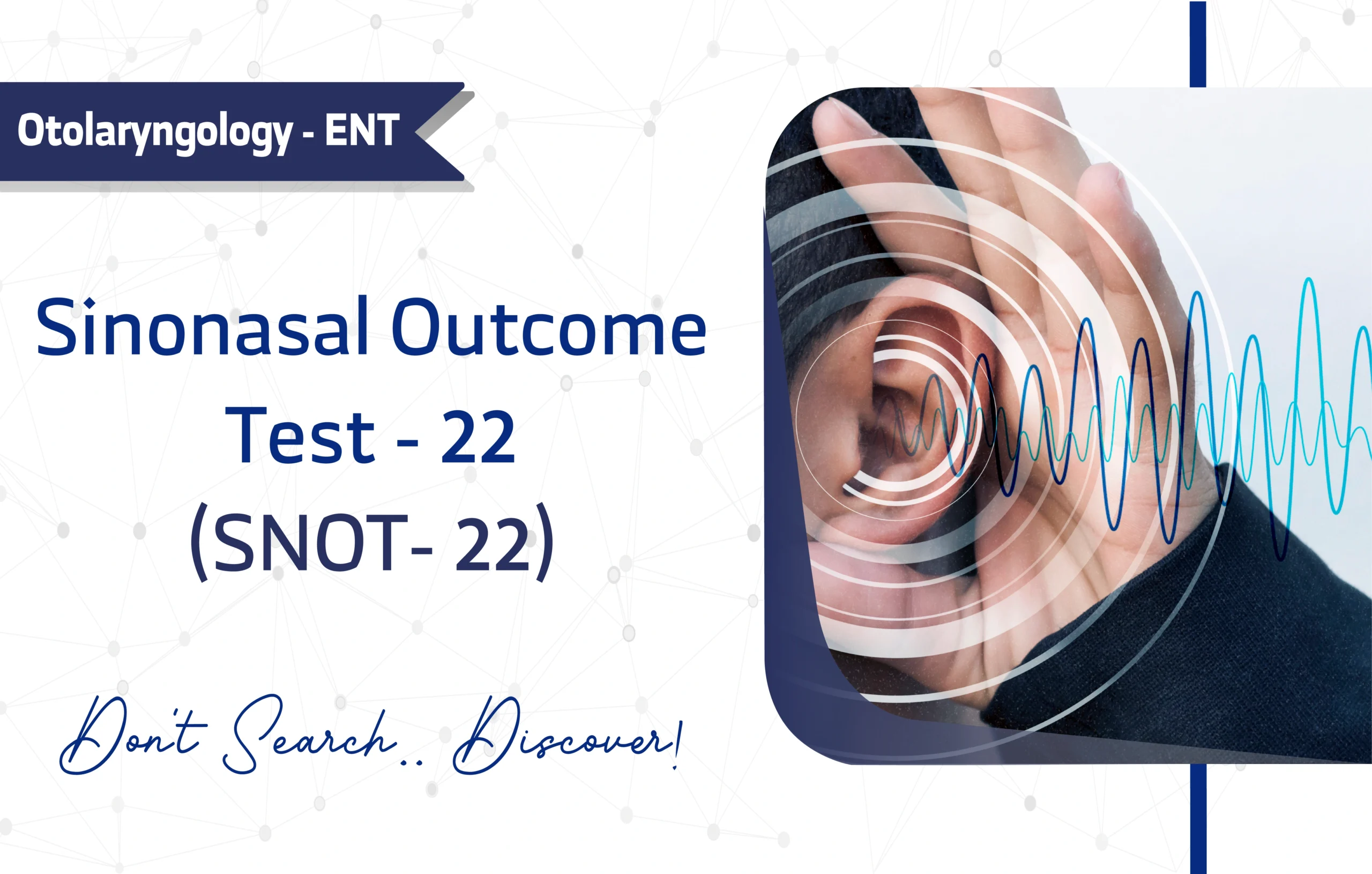Introduction
The Parkinson’s Disease Questionnaire-39 (PDQ-39) is a landmark instrument for assessing the quality of life in individuals with Parkinson’s disease. First developed in 1995 by Peto, Jenkinson, and Fitzpatrick, it was specifically designed to measure health-related quality of life (HRQoL) from the patient’s perspective. Over the years, its robust framework and clinical relevance have established it as an essential tool in both research and clinical practice. Consequently, the questionnaire has garnered over 5,000 citations on Google Scholar, which underscores its profound impact and reliability.
This article provides a comprehensive overview of the PDQ-39’s features, applications, and psychometric properties, offering researchers and clinicians the actionable insights needed to effectively assess patient outcomes.
Key Features of the Parkinson's Disease Questionnaire-39 (PDQ-39)
Purpose and Use
The primary purpose of the PDQ-39 is to assess Parkinson’s disease-specific HRQoL over the preceding month. Clinicians use it to screen for functional challenges, monitor patient progression, and inform treatment planning. In addition, researchers widely employ the PDQ-39 as a primary outcome measure in clinical trials to evaluate the effectiveness of various interventions.
Target Population
Developers validated the PDQ-39 for adults aged 18 and over who have been diagnosed with idiopathic Parkinson’s disease.
Specifically, it targets:
- Young Adults (18 – 24 years).
- Middle-Aged Adults (25 – 44 years).
- Older Adults (45 – 64 years).
- Seniors (65+ years).
While its primary focus is on this group, it is not validated for atypical parkinsonism.
Structure
The PDQ-39 is a 39-item questionnaire that covers eight distinct dimensions of functioning and well-being. This multidimensional structure ensures a holistic assessment of the patient’s experience. The domains include:
- Mobility (10 items)
- Activities of Daily Living (ADL) (6 items)
- Emotional Well-being (6 items)
- Stigma (4 items)
- Social Support (3 items)
- Cognition (4 items)
- Communication (3 items)
- Bodily Discomfort (3 items)
Consequently, this multidimensional structure captures both physical and psychosocial aspects of HRQoL comprehensively.
Scoring Method
The questionnaire uses a 5-point Likert response format where patients rate their experiences from “never” (0) to “always” (4). For each of the eight dimensions, a score is calculated and normalized to a 0-100 scale using the formula:
Dimension Score = (Sum of Item Scores / Maximum Possible Score for Dimension) × 100
Lower scores consistently reflect better quality of life. Additionally, dimension scores can be averaged to produce the Parkinson’s Disease Summary Index (PDSI), providing a single, comprehensive metric of patient well-being. Thus, the scoring system supports both detailed and overarching analyses of HRQoL.
Administration Format
Administering the PDQ-39 is efficient, typically taking between 10 to 20 minutes to complete. It is a self-administered tool that can be deployed through various formats, For example:
- Traditional paper-based forms.
- Digital online versions.
- Interviews conducted via phone or video call.
which adds to its flexibility in clinical and research settings.
Applications of Parkinson's Disease Questionnaire-39 (PDQ-39)
The PDQ-39 is a versatile tool with several key applications in both clinical practice and research:
- Screening: It quickly identifies patients experiencing significant challenges with their quality of life.
- Monitoring: It allows clinicians to track a patient’s HRQoL over time, which is crucial for managing a progressive condition like Parkinson’s.
- Treatment Planning: The dimensional scores help professionals identify specific areas of concern, thereby enabling them to tailor interventions more effectively.
- Research: It serves as a reliable primary endpoint for clinical trials and epidemiological studies focused on Parkinson’s disease.
Languages and availability
The PDQ-39 has been translated and validated in over 70 languages, including:
- Arabic
- English
- French
- Spanish
- Mandarin Chinese.
- Japanese and others
Surely, this widespread linguistic availability is critical for its global utility, allowing healthcare professionals worldwide to effectively screen diverse patient populations
It should be noted that the questionnaire is proprietary and owned by Oxford University Innovation. A license is required for its use, which is generally provided free of charge for non-commercial academic research and publicly funded healthcare. However, fees may apply for commercial use or for accessing support materials like manuals and official translations.
Reliability and Validity
The PDQ-39 is recognized as a highly reliable and valid instrument .For instance, it demonstrates excellent internal consistency, with Cronbach’s alpha values ranging from 0.72 to 0.95 across its dimensions. Moreover, its test-retest reliability is strong, with coefficients between 0.76 and 0.93. Furthermore, numerous validation studies have confirmed its robustness, solidifying its status as a gold-standard measure for assessing HRQoL in Parkinson’s disease.
- Original Validation study study link.
- Further validation study:
- Validation Study 1 study link
- Validation Study 2 study link
- Validation Study 3 study link
- Validation Study 4 study link
Limitations and Considerations
Despite its strengths, the PDQ-39 has certain limitations:
- Length: The 39-item format may feel lengthy for some patients, potentially reducing completion rates in specific populations.
- Interpretation Complexity: The multidimensionality of the eight scales can complicate score interpretation, and the summary index has been noted to lack strict unidimensionality, posing a challenge to its validity as a single score.
- Floor Effects: The tool may exhibit floor effects in patients with mild Parkinson’s disease, potentially reducing its sensitivity to change in early-stage diagnoses.
- Self-Report Measure: As a self-report measure, the responses are based on the patient’s personal perception at the time of completion. This can be influenced by their mood, recent experiences, or understanding of the questions, leading to a subjective assessment.
- Social Desirability Bias: Patients may consciously or unconsciously provide answers that they believe are more socially acceptable or that present them in a more favorable light to their healthcare provider, rather than reflecting their true state.
Other Versions And Related Questionnaires
To meet different research needs, other versions of the questionnaire are available, such as:
- The PDQ-8 is an 8-item short form that offers a quicker assessment.
- The PDQ-Carer is designed to capture the quality of life from a caregiver’s perspective.
- Furthermore, researchers often use the PDQ-39 alongside the generic SF-36 to compare disease-specific HRQoL with general population norms or the Parkinson’s Disease Quality of Life Questionnaire (PDQL) for a different perspective.
Additional Resources
- Original validation study study link
- You can access the questionnaire as a PDF through this link.
- For inquiries, contact Oxford University Innovation.
- For additional PDQ-39 resources, including licensing information, consult the official portal.
Frequently Asked Questions (FAQ)
- Who can use the PDQ-39
Clinicians, researchers, and other healthcare providers use the PDQ-39 for adults (18 and over) diagnosed with Parkinson’s disease. - How long does it take to complete the PDQ-39?
Typically, it takes 10 to 20 minutes to complete the assessment, making it highly practical for most settings. - How is the PDQ-39 administered?
Healthcare teams can administer the questionnaire via paper-based forms, digital platforms, or through phone or video interviews.
- Is there any cost to using the PDQ-39?
The PDQ-39 is proprietary. It is generally free for non-commercial academic use, but permission and a license from Oxford University Innovation are required. Fees may apply for commercial projects.
A word from ResRef about Parkinson's Disease Questionnaire-39 (PDQ-39)
The Parkinson’s Disease Questionnaire-39 (PDQ-39) remains the gold standard for Parkinson’s-specific HRQoL assessment. However, users should consider its limitations, such as the potential for subjective bias and multidimensional interpretation challenges. Nevertheless, its ability to capture the patient experience comprehensively provides essential data that informs treatment, measures therapeutic impact, and ultimately enhances patient outcomes.
References
- Peto, V., Jenkinson, C., Fitzpatrick, R., & Greenhall, R. (1995). The development and validation of a short measure of functioning and well-being for individuals with Parkinson’s disease. Quality of Life Research, 4(3), 241–248. link
- Hanff AM, McCrum C, Rauschenberger A, Aguayo GA, Zeegers MP, Leist AK, Krüger R; NCER-PD. Validation of a Parkinson’s disease questionnaire-39-based functional mobility composite score (FMCS) in people with Parkinson’s disease. Parkinsonism Relat Disord. 2023 link
- Tan LC, Luo N, Nazri M, Li SC, Thumboo J. Validity and reliability of the PDQ-39 and the PDQ-8 in English-speaking Parkinson’s disease patients in Singapore. Parkinsonism Relat Disord. 2004 link
- Hagell P, Nygren C. The 39 item Parkinson’s disease questionnaire (PDQ-39) revisited: implications for evidence based medicine. J Neurol Neurosurg Psychiatry. 2007. link
- Bushnell DM, Martin ML. Quality of life and Parkinson’s disease: translation and validation of the US Parkinson’s Disease Questionnaire (PDQ-39). Qual Life Res. 1999. link









2 thoughts on “Parkinson’s Disease Questionnaire-39(PDQ-39): A Full Guide for Researchers and Clinicians”
Highly dеscriptive article, I loved that bit. Will there be a part 2?
very nice post, i certainly love this web site, carry on it